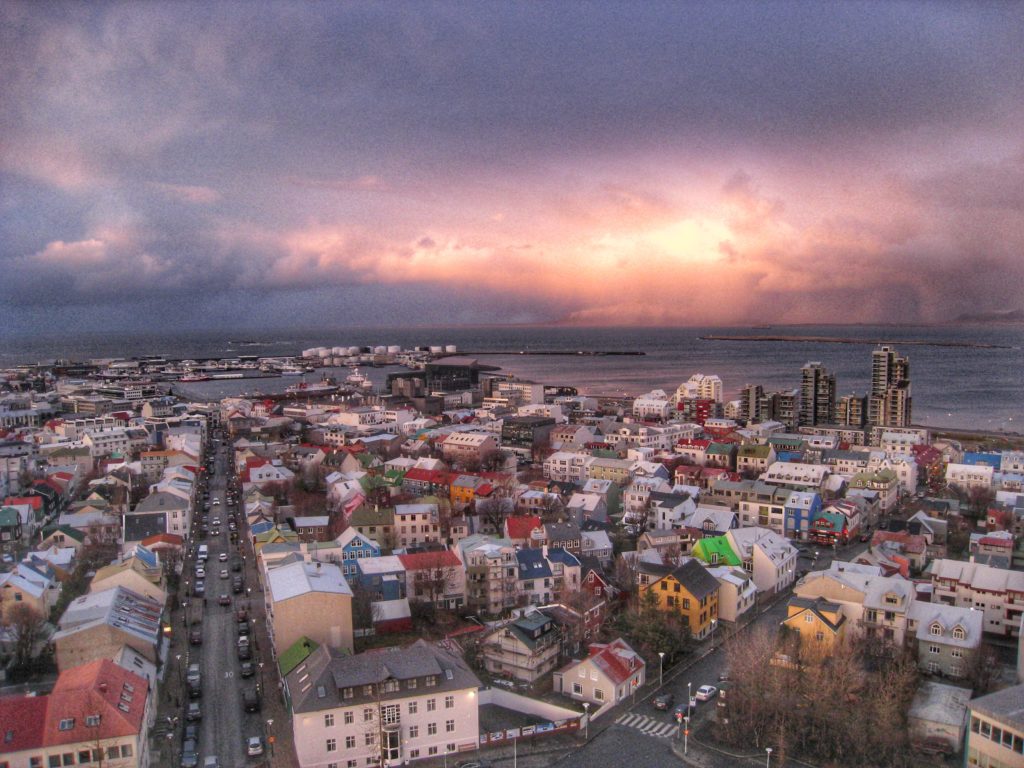
View of Reykjavik
The Viking Capital of Reykjavik
Most of Iceland’s population is concentrated around Reykjavik. The city is extremely modern and buzzing with music, art, and culture. Nightlife gets wild, but the alcohol is pretty pricey. Besides tourism, fishing is Iceland’s second biggest industry as the city serves as a large seaport.
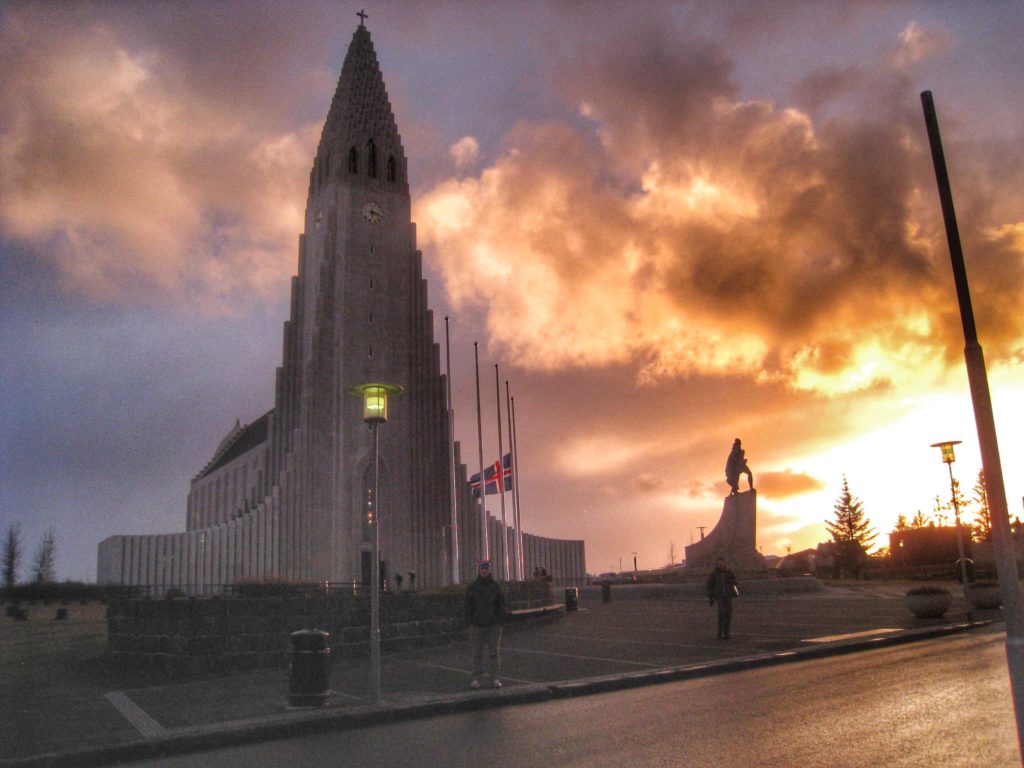
Famous Icelandic church called Hallgrímskirkja
Blue Lagoon
This geothermal gift of nature is located in Grindavik – 40 min (48 km) southwest of Reykjavik. The geothermal water has a unique composition, featuring three active ingredients – Silica, Algae & Minerals. The blue color comes the way the silica reflects sunlight.
The geothermal water originates 2,000 meters below the surface, where freshwater and seawater meet at extreme temperatures. It is then harnessed via drilling holes at a nearby geothermal power plant, Svartsengi, to create electricity and hot water for nearby communities. This is a mandatory experience!
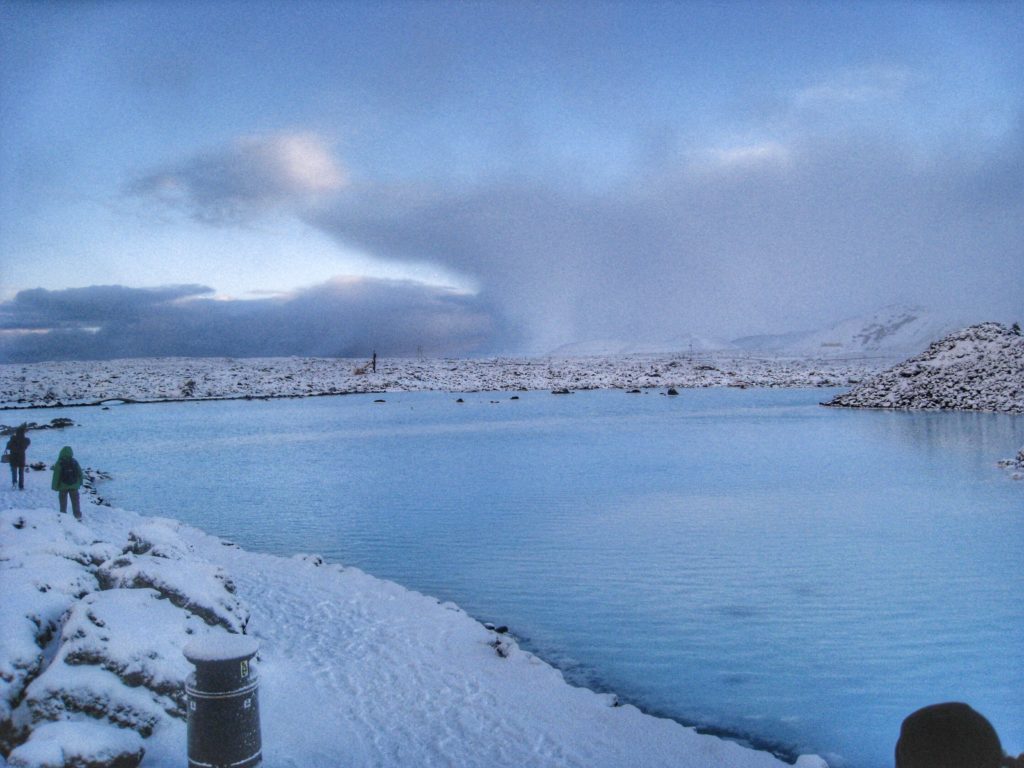
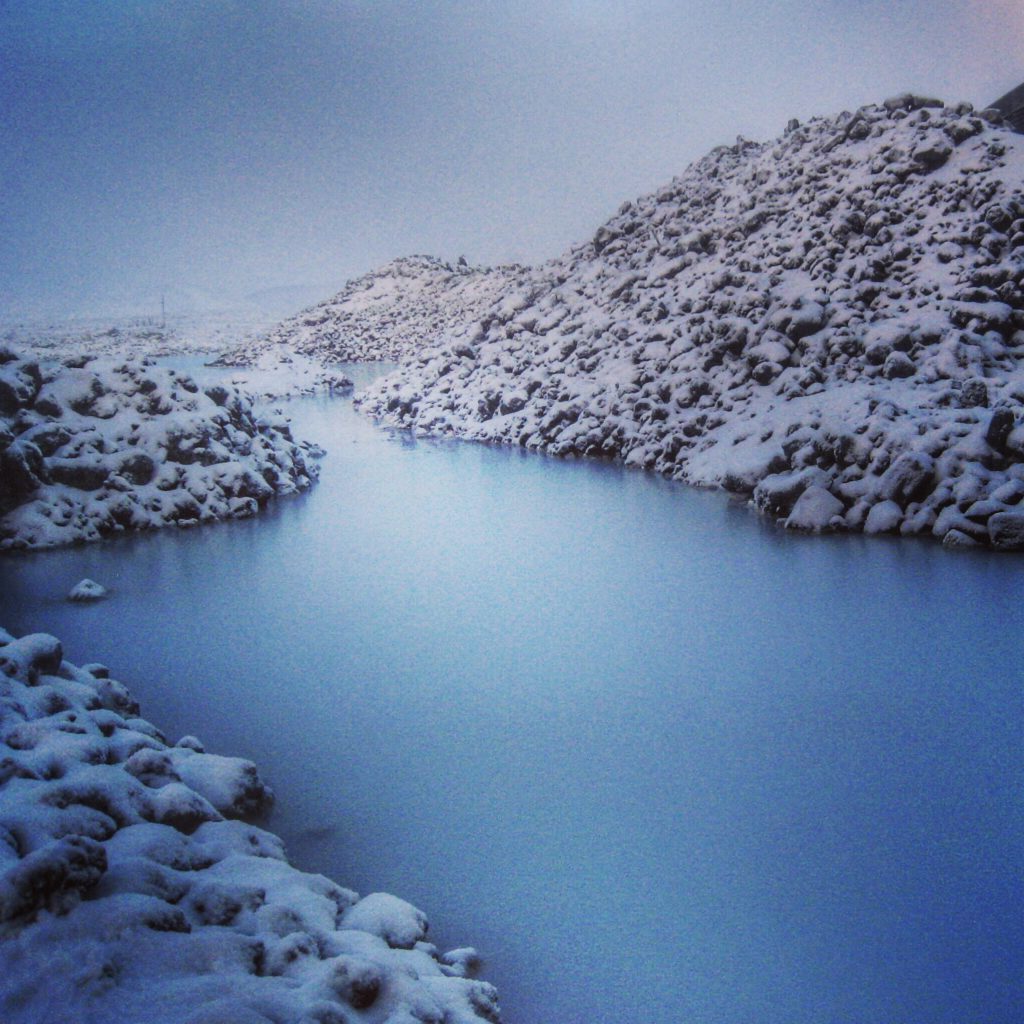
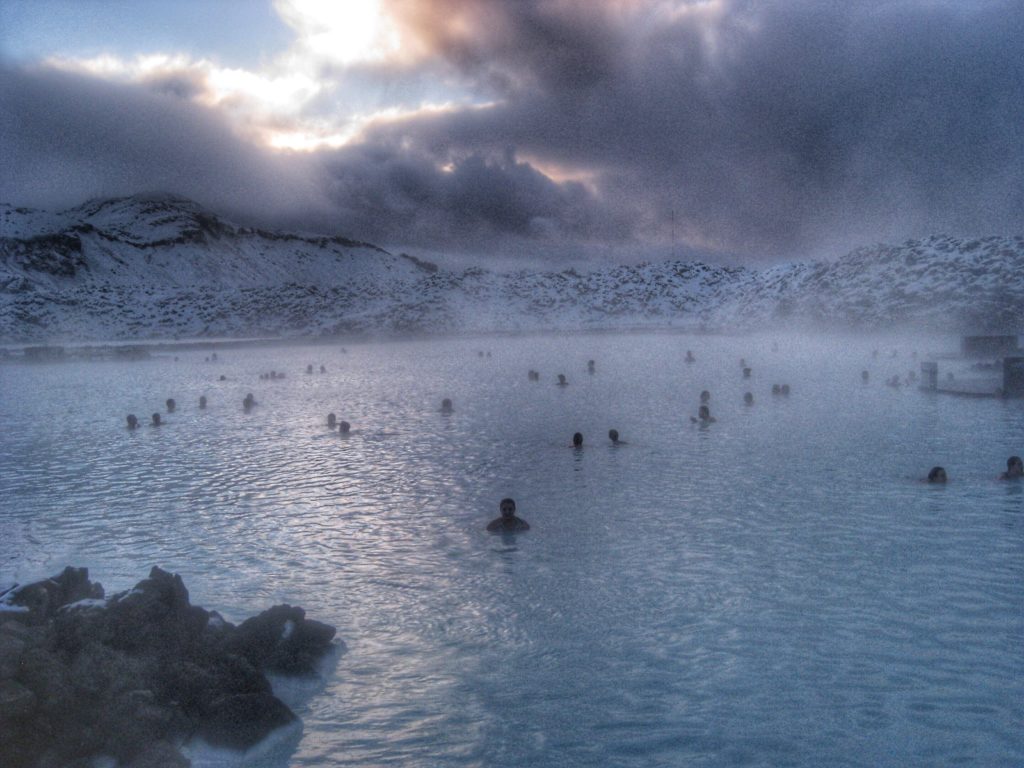
Swimming in the blue lagoon
Icelandic Glaciers
Around one-sixth of Iceland is covered in glaciers. The majority of them are located in the south and middle of the island. I recommend seeing the Vatnajokull glacier, which is the largest one. They are all easily accessible by car and fun to trek, camp around, and explore.
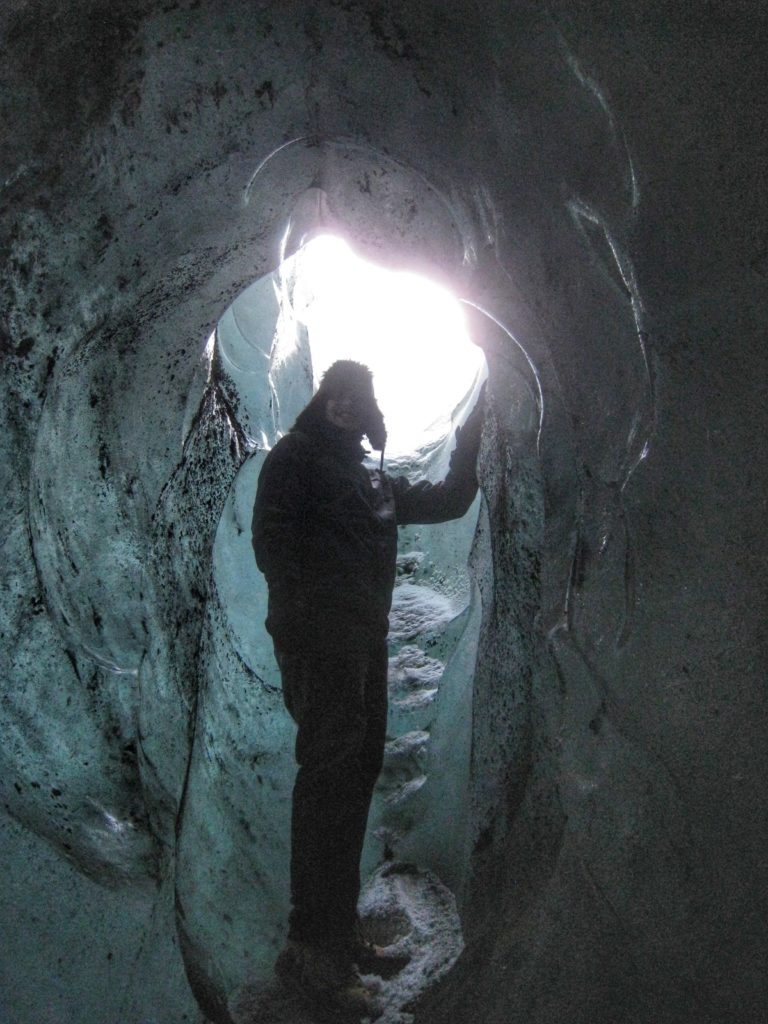
Climbing inside a crevice of the Vatnajokull glacier
Jökulsárlón Iceberg Lagoon
There is a lake at the bottom of the Breiðamerkurjökull glacier, created from melting ice from above. It’s full of blue icebergs that have broken off the base of the glacier. Some of the ice pieces collect on the lake while others float out to sea via a channel nearby.
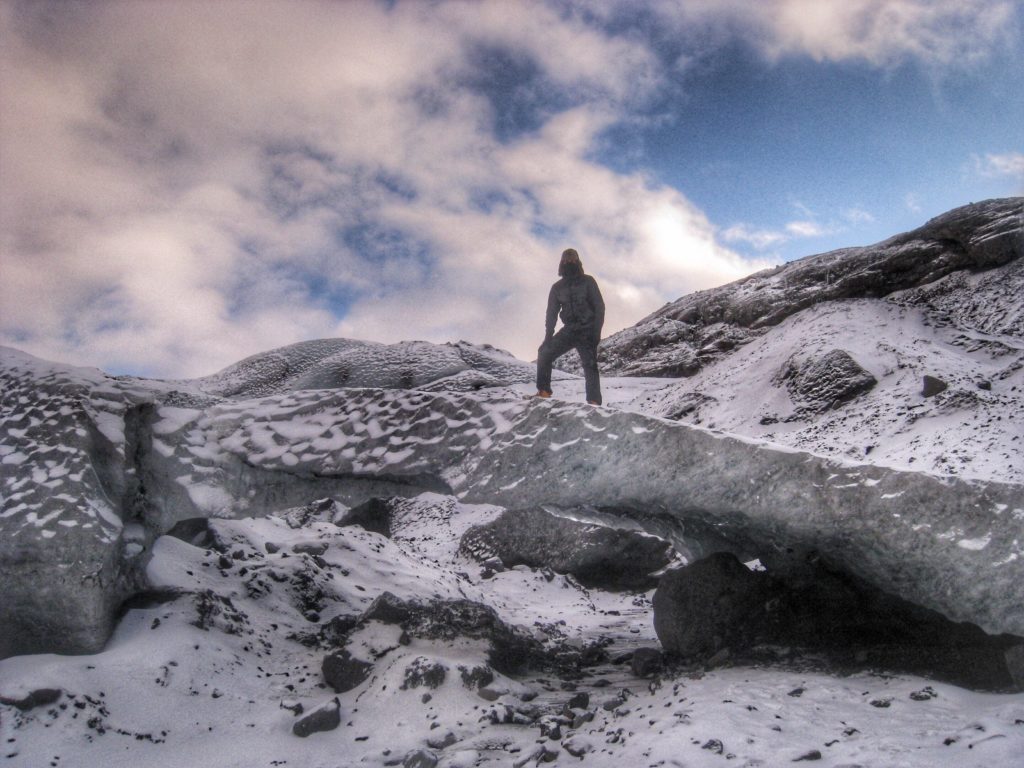
Standing on top of the glacier that breaks off into the lake below
The Northern Lights
By far one of the most sought after attractions in Iceland, capturing the perfect Northern Lights picture. It is difficult as the lights are not always visible and only show on extremely clear nights. However, when the aurora lights are on display, they exhibit nature’s beauty at its finest.
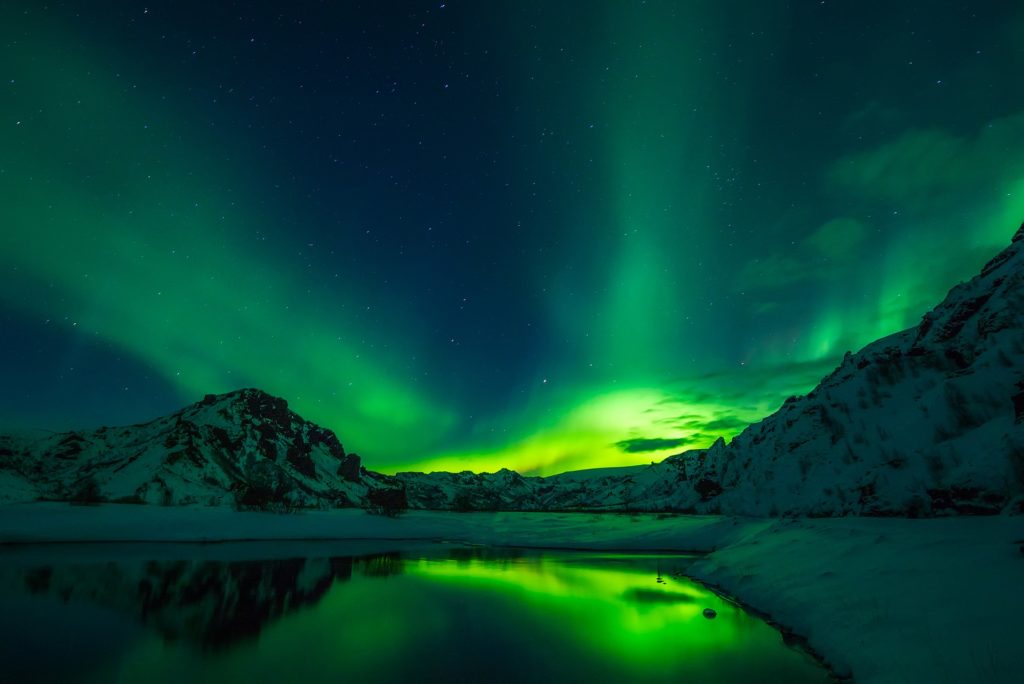
Transportation
If you are renting a car to explore the island, keep in mind that gas is very expensive. $7.50 a gallon. Gas stations are all over the towns, but once you venture into the countryside, be careful not to run out of gas since there are very few around.
Accomodation
Guidebook
When to Go?
The best time to travel to Iceland is during the summer months of July or August because this time of the year has the most daylight. If you travel during the winter months, there is very little daylight (less chance of seeing Northern Lights) and it can get unbearably cold.
Iceland is one of my favorite countries I have ever visited. Enjoy!

